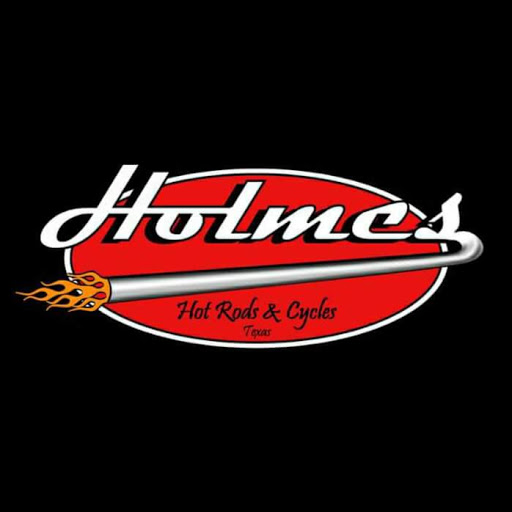Billy Holmes
age ~88
from Dallas, TX
- Also known as:
-
- Billy Homes
- Bill Holmes
- William Holmes
- Phone and address:
-
12516 Audelia Rd #2103, Dallas, TX 75243
9725639798
Billy Holmes Phones & Addresses
- 12516 Audelia Rd #2103, Dallas, TX 75243 • 9725639798
- Anton, TX
- 11259 County Road 305, Terrell, TX 75160 • 9725639798
- 11259 County Road 305 #305, Terrell, TX 75160 • 9725639798
- 3127 W Walnut Hill Ln #1094, Irving, TX 75038 • 9729867490
- 3109 W Walnut Hill Ln #1027, Irving, TX 75038
- 3109 Walnut Hill Ln, Irving, TX 75038
- 1803 Esters Rd #2051, Irving, TX 75061
- Garland, TX
Emails
Resumes

Manager Of Environmental Affairs
view sourceLocation:
Dallas, TX
Industry:
Renewables & Environment
Work:
Darling Ingredients Inc.
Manager of Environmental Affairs
Manager of Environmental Affairs
Education:
Texas A&M University 2003 - 2007
Bachelors
Bachelors

Billy Holmes
view source
Billy Holmes
view sourceLocation:
Dallas, TX

Billy Priscilla Holmes
view source
Billy Holmes
view sourceWork:
Texas A and M University
Education:
Texas A and M University
Bachelor's degree, Political Science and Government
Bachelor's degree, Political Science and Government
Name / Title
Company / Classification
Phones & Addresses
President
Tristar Rehab, Inc
Specialty Outpatient Clinic
Specialty Outpatient Clinic
207 E Parkerville Rd, Desoto, TX 75115
Us Patents
-
Method For Operating A Production Well In An Oxygen Driven In-Situ Combustion Oil Recovery Process
view source -
US Patent:45987726, Jul 8, 1986
-
Filed:Dec 28, 1983
-
Appl. No.:6/566373
-
Inventors:Billy G. Holmes - Lancaster TX
-
Assignee:Mobil Oil Corporation - New York NY
-
International Classification:E21B 43243
E21B 4706 -
US Classification:166251
-
Abstract:A method for operating a production well during an oxygen driven in-situ combustion oil recovery process comprising continuously injecting an inert gas such as nitrogen or carbon dioxide into the bottom of the production well at a predetermined low injection rate, preferably 0. 1 to 2 MSCF/day, and continuously monitoring the oxygen concentration of the produced effluent gas and the bottomhole temperature of the production well. In the event that the oxygen content of the effluent gas increases to a value within the range of 5 to 20 volume percent or the bottomhole temperature of the production well increases to a value within the range of 200. degree. to 300. degree. F. , the injection rate of the inert gas into the bottom of the production well is increased to a maximum rate until the oxygen concentration of the effluent gas and the bottomhole temperature are reduced to a safe level.
-
Method For Operating An Injection Well In An In-Situ Combustion Oil Recovery Using Oxygen
view source -
US Patent:45665362, Jan 28, 1986
-
Filed:Oct 29, 1984
-
Appl. No.:6/665869
-
Inventors:Billy G. Holmes - Lancaster TX
-
Assignee:Mobil Oil Corporation - New York NY
-
International Classification:E21B 4700
E21B 43243 -
US Classification:166251
-
Abstract:An injection well used in an in-situ combustion oil recovery process using a high oxygen concentration gas is completed with dual tubing strings to conduct the oxygen-containing gas and nitrogen separately down the well. The gases are mixed after they leave their separate tubing strings and enter the formation through perforations in the casing. If the bottomhole temperature of the well increases to a specific level, injection of the oxygen-containing gas is terminated and injection of the nitrogen is increased to a maximum amount until the bottomhole temperature decreases to a desired level for resuming in-situ combustion. In addition, injection of water into the bottom of the well is available as a back-up in the event that injection of the nitrogen does not lower the bottomhole temperature to the desired level. The use of the separate tubing strings for nitrogen and oxygen flow permits a faster bottomhole response to be obtained if undesired temperature increases take place downhole.
-
Method Of Recovering Oil From Heavy Oil Reservoirs
view source -
US Patent:47934158, Dec 27, 1988
-
Filed:Dec 29, 1986
-
Appl. No.:6/947140
-
Inventors:Billy G. Holmes - Lancaster TX
Stevan L. Weber - Allen TX -
Assignee:Mobil Oil Corporation - New York NY
-
International Classification:E21B 4324
-
US Classification:166263
-
Abstract:A steam flooding method for recovering oil from an underground formation penetrated by an injection and at least one production well is modified by initially lowering the permeability of the lower vertical portion of the formation, e. g. , by plugging thereof with gravel sand pack, capped by a plaster of paris or cement, thereafter continuing to inject the steam into the injection well and maintaining high level of production from the production well until thermal breakthrough is achieved in the production well. Subsequently, the initial permeability of the lower vertical portion of the formation is restored, e. g. , by removing the gravel sand pack, and oil is recovered from the production well. In a preferred embodiment, the permeability of substantially the entire initial completed interval of the production well is decreased in the aforementioned manner, the well is recompleted higher in the formation and steam is continuously injected into the injection well. Subsequently, the secondary completed interval is plugged, and the permeability of the primary completed interval is restored substantially to its original level.
-
Well Completion For Injecting High Purity Oxygen In A Fire Flooding Process
view source -
US Patent:44402279, Apr 3, 1984
-
Filed:Nov 8, 1982
-
Appl. No.:6/439661
-
Inventors:Billy G. Holmes - Lancaster TX
-
Assignee:Mobil Oil Corporation - New York NY
-
International Classification:E21B 43243
-
US Classification:166261
-
Abstract:A well completion for an injection well includes continuous tubing disposed within a tubing string. Oxygen is supplied to a fire flood process through the continuous tubing and water is supplied through the tubing string. The tubing string and continuous tubing are valved and seated in a manner which provides for safe injection of high purity oxygen into the subsurface formation.
-
Apparatus For Mixing Gas And Liquid At A Downhole Location
view source -
US Patent:41880684, Feb 12, 1980
-
Filed:Apr 17, 1978
-
Appl. No.:5/896829
-
Inventors:Billy G. Holmes - Lancaster TX
Jimmie Crofford - Arlington TX -
Assignee:Mobil Oil Corporation - New York NY
-
International Classification:E21B 2328
-
US Classification:299 5
-
Abstract:Apparatus for mixing a gas, e. g. , oxygen, and a liquid, e. g. , leach solution, at a downhole location in a well for treating a formation, e. g. , in situ leaching of uranium. The apparatus comprises a mixing means which is adapted to be affixed to the lower end of the gas supply conduit and is lowered into and raised out of the well by means of the conduit. The mixing means is comprised of a solid, noncorrosive plate having a central opening into which the gas conduit is secured. The plate has a plurality of additional openings surrounding the central opening and has a gasket thereon to form a seal between the plate and the well bore. Liquid is flowed down the well and passes through the additional openings in the plate. At the same time, gas is supplied through the conduit and flows through the central opening in the plate. Due to the increased velocity of the liquid caused by the liquid as it flows through the additional openings in the plate, the gas is trapped to form a gas pocket below the plate.
-
Oil Recovery Method
view source -
US Patent:46518266, Mar 24, 1987
-
Filed:Jan 17, 1985
-
Appl. No.:6/692133
-
Inventors:Billy G. Holmes - Lancaster TX
-
Assignee:Mobil Oil Corporation - New York NY
-
International Classification:E21B 43243
-
US Classification:166251
-
Abstract:The combustion front in an in situ combustion oil recovery operation is stabilized by cyclically varying the injection rate of the gaseous oxidant which is injected through the injection well. Periodic reduction in the injection rate of the oxidant halts the advance of the combustion front through the formation and permits the formation fluids to flow in a reverse direction back towards the front so that burned through fingers or streaks collapse and any overriding tendencies of the front are corrected. In this way, the vertical conformance of the front is increased to improve the sweep efficiency of the process. The process is most effective in externally pressured formations.
Googleplus

Billy Holmes
Relationship:
Engaged

Billy Holmes

Billy Holmes

Billy Holmes

Billy Holmes

Billy Holmes

Billy Holmes

Billy Holmes

Billy Holmes
view source
Billy Holmes
view source
Billy Holmes
view source
Billy Holmes
view source
Billy Holmes
view source
Billy Holmes
view source
Billy Holmes
view source
Larry Billy Holmes
view sourceMyspace
Plaxo

Billy Holmes
view sourceYoutube
Get Report for Billy Holmes from Dallas, TX, age ~88





